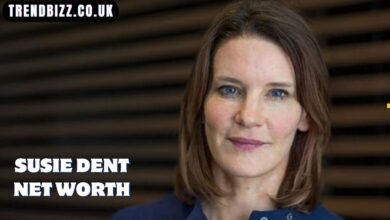Celebrities with Disabilities: Inspiring Stories, Challenges, and Triumphs??

When thinking about fame and fortune, most people imagine a life of ease and privilege. But some celebrities with disabilities prove that even in the glittering world of entertainment, success often comes with unique challenges. These stars not only shine in their respective industries but also inspire millions through their resilience, talent, and ability to rise above limitations.
In this article, we’ll explore well-known celebrities with disabilities, their conditions, how they embraced their challenges, and the powerful impact they’ve had on disability representation. Whether in acting, music, sports, or beyond, these individuals remind us that disabilities do not define a person—they redefine strength.
What Does It Mean to Be a Celebrity with a Disability?

The term “disability” includes a wide range of physical, intellectual, developmental, and mental conditions that may affect how someone interacts with the world. Celebrities with disabilities challenge societal stereotypes by succeeding in competitive industries despite obstacles.
These individuals often use their platforms not only to entertain but also to advocate for inclusion, raise awareness, and inspire others with similar challenges. By sharing their personal stories, they bring visibility to issues that are too often ignored.
Famous Celebrities with Physical Disabilities

Stephen Hawking – ALS and the Mind of a Genius
Though not an entertainer in the traditional sense, physicist Stephen Hawking was a celebrity in the truest form. Diagnosed with amyotrophic lateral sclerosis (ALS) at 21, he lived with the degenerative condition for decades. Confined to a wheelchair and using a speech-generating device, Hawking redefined what it means to be a scientist, thinker, and public figure.
Frida Kahlo – Chronic Pain and Artistic Brilliance
Frida Kahlo, the famed Mexican painter, lived with lifelong pain due to polio and a devastating bus accident. Despite her limited mobility, she produced deeply emotive artwork that resonated with millions. Today, she’s remembered not only for her artistic legacy but also for how she expressed her struggles through art.
Peter Dinklage – Achondroplasia and Global Recognition
Peter Dinklage, best known for his role as Tyrion Lannister in Game of Thrones, has achondroplasia, a form of dwarfism. Rather than letting his stature limit his roles, Dinklage sought complex characters and refused to be typecast. His career has helped normalize dwarfism in the entertainment world.
Musicians and Performers with Disabilities
Stevie Wonder – Blindness and Musical Genius
Blind since infancy, Stevie Wonder is one of the most acclaimed musicians of all time. His disability never held him back—instead, it deepened his connection to rhythm and melody. From soul to pop, Wonder’s contributions to music remain legendary.
Andrea Bocelli – Tenor of the Soul
Italian opera singer Andrea Bocelli lost his sight completely by age 12. Despite this, he became a world-renowned tenor, captivating audiences with his voice. His musical achievements exemplify how talent transcends physical limitations.
Rick Allen – One-Armed Drummer of Def Leppard
Rick Allen lost his left arm in a car crash in 1984, but he didn’t let that end his career as the drummer for Def Leppard. He re-learned how to play using a specially designed drum kit and became a symbol of perseverance in the rock music world.
Actors and Actresses with Disabilities Who Changed Hollywood
Marlee Matlin – Deafness and Acting Prowess
Marlee Matlin became the first deaf performer to win an Academy Award for Best Actress for her role in Children of a Lesser God. Despite the barriers in Hollywood for deaf actors, she has worked consistently, advocating for accessibility in the industry.
RJ Mitte – Cerebral Palsy and Breaking Bad
RJ Mitte, who has mild cerebral palsy, portrayed Walter White’s son in Breaking Bad, a character who also had CP. His role was groundbreaking for accurately depicting disability on mainstream television without reducing the character to a stereotype.
Lauren Potter – Down Syndrome and Glee
Known for her role as Becky Jackson on Glee, Lauren Potter has Down syndrome and has become an advocate for disability rights. She’s spoken out against bullying and discrimination and served on President Obama’s Committee for People with Intellectual Disabilities.
Athletes with Disabilities Turned Celebrities
Bethany Hamilton – Shark Attack Survivor and Surfer
Bethany Hamilton lost her arm in a shark attack at age 13 but returned to professional surfing within a year. Her story inspired the film Soul Surfer and made her a symbol of determination in sports and beyond.
Oscar Pistorius – Blade Runner Controversy
Before his personal controversies, Oscar Pistorius made history as a double amputee competing in the Olympic Games with carbon-fiber prosthetic legs. His career brought global attention to athletes with prosthetics, sparking debates around inclusion and fairness in sports.
Mental Health and Invisible Disabilities Among Celebrities
Not all disabilities are visible. Many celebrities have bravely opened up about mental health conditions and neurodivergent diagnoses.
Demi Lovato – Bipolar Disorder and Addiction Recovery
Demi Lovato has been open about living with bipolar disorder and substance abuse. Her transparency has helped destigmatize mental illness and inspire young fans to seek help.
Dan Aykroyd – Asperger’s Syndrome
Comedian and actor Dan Aykroyd has spoken about living with Asperger’s syndrome, which contributes to his intense focus and unique style of humor. His success challenges the notion that neurodivergence is a barrier to creativity.
Selena Gomez – Lupus and Mental Health
Selena Gomez revealed her lupus diagnosis and kidney transplant, followed by discussions of depression and anxiety. She uses her platform to advocate for mental health awareness and support.
Why Representation Matters in the Media
Seeing celebrities with disabilities succeed in mainstream media sends a powerful message: disability is not a weakness or a flaw—it is a part of human diversity. When disabled individuals are represented authentically, it breaks down stigmas and allows audiences to connect more deeply with real stories.
Representation also opens doors for more opportunities behind the camera, in executive roles, and in creative decision-making, ensuring disabled voices are heard at all levels.
FAQs About Celebrities with Disabilities
Q: Are there many celebrities with disabilities in Hollywood?
A: Yes, though not all are visible. From physical conditions to chronic illnesses and mental health challenges, many celebrities live with disabilities and are increasingly choosing to speak out.
Q: Do celebrities with disabilities receive equal opportunities?
A: Not always. While progress is being made, systemic barriers, typecasting, and lack of accessibility still affect opportunities. Advocacy and inclusive policies are helping shift the landscape.
Q: How can fans support celebrities with disabilities?
A: By supporting their work, advocating for representation, challenging stereotypes, and educating themselves about disability rights and inclusion.
Q: Is there a difference between visible and invisible disabilities in celebrity culture?
A: Yes. Visible disabilities are often more immediately recognized, while invisible disabilities like mental health conditions may be misunderstood or dismissed. Both deserve equal attention and respect.
Final Thoughts: Celebrities with Disabilities Redefining Fame
The stories of celebrities with disabilities?? show that success isn’t about being perfect—it’s about perseverance, passion, and authenticity. These individuals have redefined what it means to be a star, not just by their talents, but by their courage to be vulnerable and different in a world that often expects conformity.
Also read : Connie McLaughlin Age, ??, Biography, Career and Public Curiosity Explained in Detail




